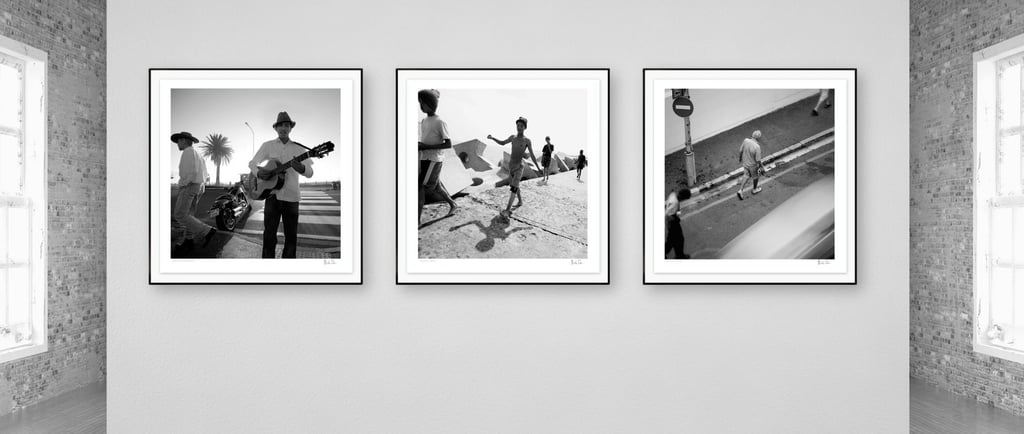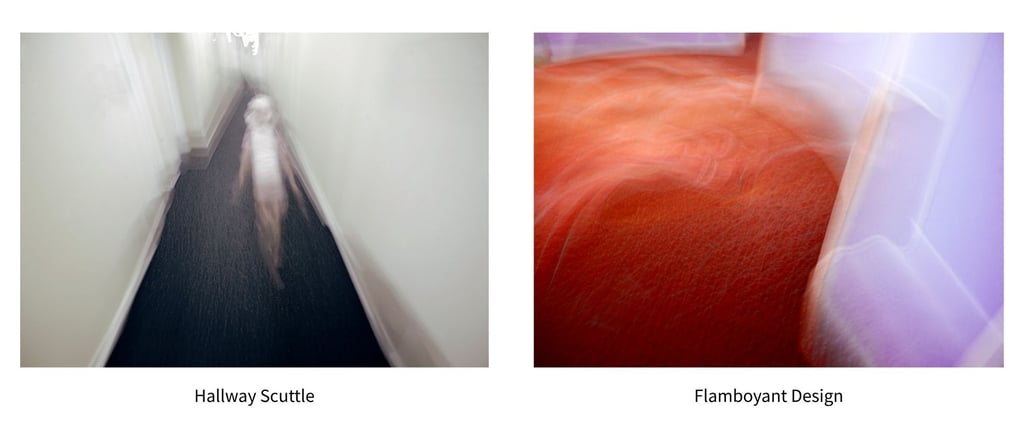On the Move — The Story Behind the Collection
Discover the story behind On the Move, a limited-edition black-and-white series by Martin Osner. Created spontaneously during a 2007 Cape Town exhibition, the collection celebrates life’s unscripted moments and the beauty of urban lifestyle and energy.
BLACK & WHITEURBAN & INNER CITYDOCUMENTARY & HUMAN STORIES
Martin Osner
10/24/20255 min read


The story of On the Move takes me back to 2007, early in my fine art photography career. At that stage, I had only recently started exhibiting my work, and I was still navigating my way around the art world. At the time, I was working on my Abandoned collection, a limited edition series, while simultaneously developing smaller collections such as Road to Freedom and Children of Geluk.
These were very exciting, but somewhat uncertain years in my artistic career. I didn't yet have my own gallery space and was trying to find galleries that might represent my work. It was a time of hope and persistence, of sending out portfolios and waiting for someone to believe in what I was doing.
Early Breakthroughs
One of the first people who did was a school friend, Gordon Froud, who recognised something in my early work and offered me an exhibition at his Gordart Gallery in Melville, Johannesburg. He agreed to show my Abandoned collection — a huge step forward at the time.
Around the same time, Sally Thompson of the Thompson Gallery, also in Melville, granted me a small exhibition of Children of Geluk. These opportunities felt like cracks of light breaking through — small, encouraging signs that my work was beginning to find its way. Yet I still wasn't entirely sure of my direction or whether people would connect with my imagery. But I loved what I was doing and hoped that, eventually, something bigger would come.
And then, out of the blue, it did.
A Big Break
I was approached by one of the most respected galleries in Southern Africa — the Everard Read Gallery in Cape Town. For me, this was a defining moment. (Founded in 1913, Everard Read is one of the oldest commercial galleries in the Southern Hemisphere — a true cornerstone of the art world.)
They offered to host an exhibition that included both my Abandoned and Road to Freedom collections, along with several other works. I was living in Pretoria at the time, so my family and I travelled down to Cape Town for the show, staying for about a week to help with pre-exhibition tasks leading up to the opening night.
I was nervous, of course — but it wasn't the kind of nervousness rooted in fear. It was excitement, that exhilarating sense of anticipation that I've since come to know as a vital part of my creative process. I've noticed that every time an exhibition approaches and that excitement sets in, new ideas begin to spark.
Inspiration at the President Hotel
We stayed at the President Hotel in Bantry Bay, a lovely family hotel overlooking the ocean. While there, I started experimenting with an impressionistic abstract body of work using the long, patterned corridors of the hotel as my canvas.
My two older children — Samantha and Matthew — were still young, and I had them run down the hallways while I chased them with my camera. We laughed, played, and unknowingly created a fascinating series of abstract images called "Hallway Scuttle" and "Flamboyant Design", which I've not exhibited yet.


One morning, while having coffee and looking out the hotel window, I noticed a street person passing below, collecting cigarette stubs. He appeared almost every morning at the same time. One day, he was walking towards a "No Stopping" street sign — it felt as if both he and a couple pushing a pram up ahead had noted the sign and were obeying it — and I instinctively captured the moment. It felt symbolic, a metaphor for human movement and the direction of city laws. That image became the first in what would later be known as On the Move.
The next morning, the same man passed again, this time walking in the opposite direction behind two tourists heading toward town. I'd seen them at breakfast earlier — a couple who had clearly argued — now walking in silence, apart from one another, with the street man following behind, still searching the pavement for cigarette stubs. The frame captured three lives moving in the same direction, this time disobeying a "No-entry" sign.
The Moments That Became On the Move
That afternoon, in Camps Bay, we were enjoying lunch on the promenade when a guitarist appeared, playing for tips. Behind him was a pedestrian crossing, and as people passed through the scene, one man in a cowboy-style hat stepped into the frame, creating a perfect visual trigger. Another image was born.
The next morning, from the window of our hotel room, I noticed an outdoor shower area near the pool. It looked interesting but felt incomplete. I waited, hoping someone might step in — but no one did. Then, a seagull flew through the frame, and I captured it mid-flight. It completed the composition beautifully, becoming the fourth image of the series.
That afternoon, we took a drive to Hout Bay, one of our favourite places in Cape Town — and today, our home. At Mariner's Wharf, while we were eating fish and chips, my youngest daughter, Leeanne, then about five years old, began chasing seagulls along the dock. Her joy and movement embodied the very essence of the series, so of course, I photographed her too.
Near the end of our trip, we took a drive to Gordon's Bay. Down at the harbour, along the yacht jetty, a group of young boys came walking toward us. They had been fishing with hand lines, and they were full of energy, laughing and carefree. I captured them as they passed — even the fine fishing line is visible in the image. It became the sixth and final photograph in the series, closing it on a note of youthful spontaneity.
The Lesson Behind the Work
Looking back, I realise that On the Move was never planned. It happened organically — a collection born out of life itself. As a photographic artist, I have noticed that I often overthink the process, trying to plan the perfect concept or chase an idea in an attempt to ignite inspiration. Yet some of my best work happened when I stopped trying to make art and instead allowed the art to come to me.
During that week in Cape Town, I wasn't in the studio or behind a desk. I was with my family, enjoying time off, combining an exhibition with a holiday. My mind was relaxed, my senses open — and that's when the visual world started to make perfect sense. When you're present, calm, and excited by life, creativity seems to flow naturally.
Memory and Meaning
Every time I look at the On the Move photographs, I'm transported straight back to that week — to the Everard Read Gallery, to the President Hotel, to my children's laughter and the sea air in Hout Bay. Photography, for me, is not only a creative tool but also a keeper of memories. Recently, I recorded a YouTube discussion, "Fine Art Photography - Much More Than What You See", which underscores this point.
The On the Move prints are archival black-and-white pigmented prints on 100% acid-free fine art paper, produced in a limited edition of 35.
Over the years, this series has remained one of my most popular — perhaps because it embodies what photography is truly about: being present, capturing reality, and letting life and stories unfold through the lens.
As Ansel Adams once said, "A great photograph is one that fully expresses what one feels." That week in Cape Town — full of art, family, and discovery — was, as Adams might put it, a very fine harvest indeed.
VISIT MARTIN'S ART GALLERIES
© 2025 Martin Osner Art. All Rights Reserved
